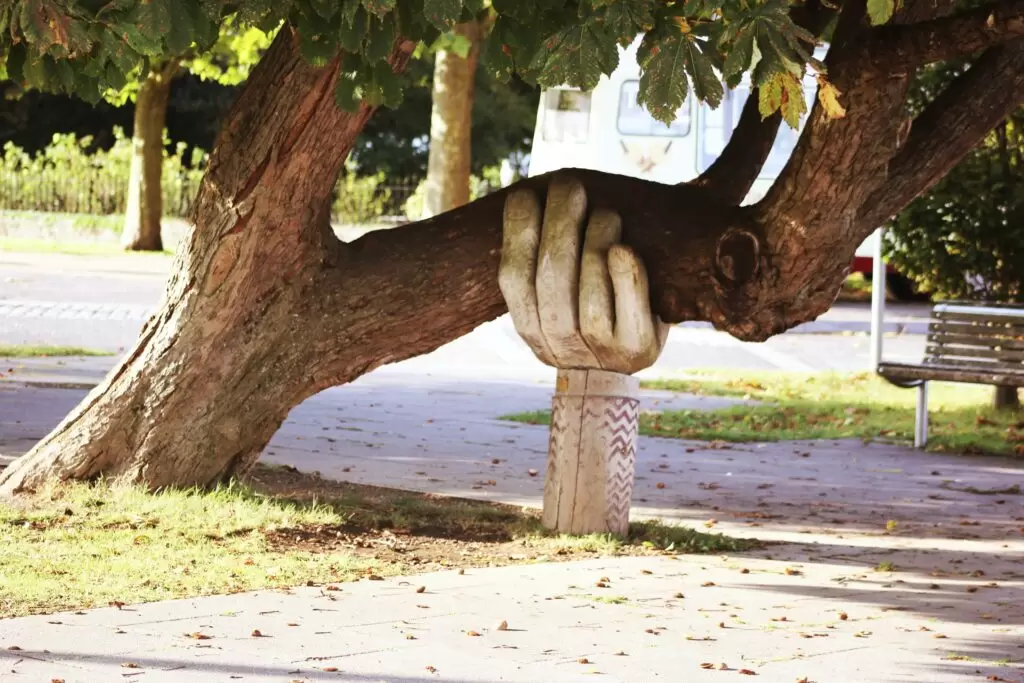Overcoming Imposter Syndrome: How to Share Your Portfolio With Leading Curators
It can be incredibly intimidating for aspiring artists to take that first step and approach curators. Here are some steps to make the process exciting rather than stressful.

How does an artist pave their way into a respected curator’s heart? That’s the million-dollar question and there certainly is no one-size-fits-all answer. The first step, however, is to stop thinking about curators as some sort of unapproachable superstars.
Instead, focus on the following: put yourself out there, go to the openings, become a part of the art crowd. Invite people to your studio and network tirelessly. It’s certainly a challenge, especially for emerging artists, but you can employ various tools to make you feel more at ease. You could, for example, bring a friend to accompany you to an opening. If said friend has a background in the arts, that would surely be an added benefit. Social media is also a great gateway to get acquainted with fellow colleagues and art professionals without feeling awkward/intrusive. Sure, your studio may be a safe haven – but it sure does pay off to break out of that bubble once in a while.
Approaching Art Curators
Prior to contacting the curator you’d like to work with, make sure you’ve done your homework. Put together a list and try to answer the following questions: why do you want to work with this specific curator? Do you think their approach can help your career? Are you both “on the same page”?
You need a clear formula to help clarify why this person and their work is of interest to you, and you should clearly refer to this formula in your outreach. The curator should be confident that they’re not a part of a mass/general outreach email blast, so your approach needs to be highly personalised. Try to reference specific projects – this helps to make it clear that you aren’t just a random person, but someone who’s made a real effort and is thus a genuine prospect.
Before crafting your initial email, you need to sit down and understand what it is that they do, what topics they work with and who their institutional partners are. The better you are prepared, the faster they will respond – and a meaningful dialogue of this kind may lead to fruitful collaborations. You should, however, remain mindful of their need for personal space and time constraints, so don’t be too pushy. It’s likely that you won’t get a response immediately; it could take a week or even a month. Be patient – it pays off.
It’s equally vital that you have a distinct online identity and portfolio. Unfortunately, many artists don’t have the time or the tools to sit down and work on this. I would argue that this absolutely is worth spending time on, since it helps you tell the world what you and your art is about, and enables curators to find you. I spent some time researching the best way to go about creating an art portfolio website for increased online exposure and here are my findings.

Why You Need an Online Portfolio
- You will be able to showcase your work – it basically functions like an online gallery.
- You will be in charge of building your personal brand and positioning yourself exactly the way you want to be seen.
- You will get more exposure – anyone with an internet connection will be a couple of clicks away from your work.
- You will make yourself seen. Having a professional portfolio website with your contact information makes it easier for curators to reach out to you. It’s disappointing and tiring when one has to waste time searching for scattered information about the artist.
- You will have a chance to go viral. If your artworks get lots of traction, having your portfolio online would be a smart way to channel online success.
How to Launch Your Portfolio in Just a Few Hours
1. Buy a domain name;
2. Register for an account with a website builder (a free one is enough to start, you can always update it later).
3. Check their templates and choose one;
4. Select and upload your best work, don’t forget about accompanying texts;
5. Add the additional pages and content (e.g. contact, about, services, blog, etc.)
5. Connect your website with your social media channels.
6. Ask an artist or a curator you know for feedback.
7. Upgrade to a paid plan and connect your domain name. If you want a .art website name, you can pick one here
8. Promote your portfolio.
What’s the Best Website Builder for Artists?
We’ve all heard about website builders. You get access to Weebly when you purchase a .art domain, for example. Other website builders focused specifically on showcasing creative work are Readymag, IM Creator and Cargo Collective.

Websites created on Readymag
Stay positive and focus on the future. Make it easier for curators and art institutions to find you with a well presented digital portfolio website on .art domain. By becoming digitally equipped, you’re ensuring that you’re prepared for a quickly changing creative work landscape.






